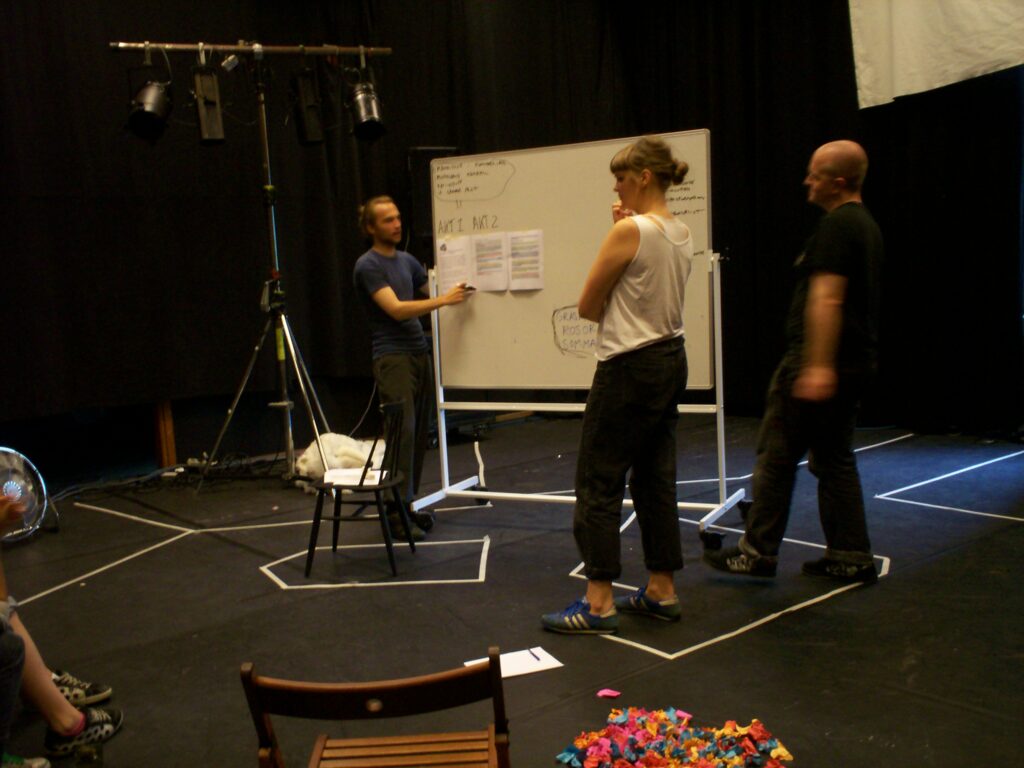
Eirik Fatland kindly translated this post from Swedish.
Tips
- Communicate the agreement clearly and explicitly. Only when the participant knows the rules of play, that is: how communication and participation are meant to be done, is she confident enough to act.
- Consider banning passive spectators and documentation. The external, critical, view is not always productive. It may in some cases prevent participatory action. People do not behave the same way in front of a camera as they do in front of confidantes. Documentation usually fails at capturing the qualities of a participatory work, but easily pushes participants from dialogic action to simple performance.
- Use an aesthetic or story as basis. In this way, a framework is easily made for the action. With total creative freedom, it is easy for the participants to drift off into darkness without knowing what to do. Stories help us find meaningful actions.
- Use the body and its senses. Whether participation is verbal or physical, the various senses can be employed. Sharing smells, sound, rhythm, music and food together can intensify the meeting.
Traps
- Over-confidence in the Will to participate. We are schooled in the spectator paradigm, and many fear participation.
- Interactivity instead of participation. Rather than creating a space for action, one creates only a limited set of options to choose between. This is common amongst producers with a need for control.
- Too high threshold. The skill of participation must be learned. It works differently in different contexts and cultures. Consider how to avoid making the rules governing interaction too difficult and complicated.
- Narrow space of action / little possibility for impact. The participant’s must have the possibility to act in a way that has a genuine influence on the experience and actions of other participants. Putting a piece of paper in a box, or hanging it on the wall at the end of an exhibition – these are not participatory.
- Work / alienation. Mandatory participation with a results focus is pervasive in our society, e.g. in schools. Grading individual contributions to a group work is an excellent way to destroy the participatory process.
- Provocation. Trying to cross the barrier between producer and consumer using provocation rather than formulating new agreements.
Leave a Reply